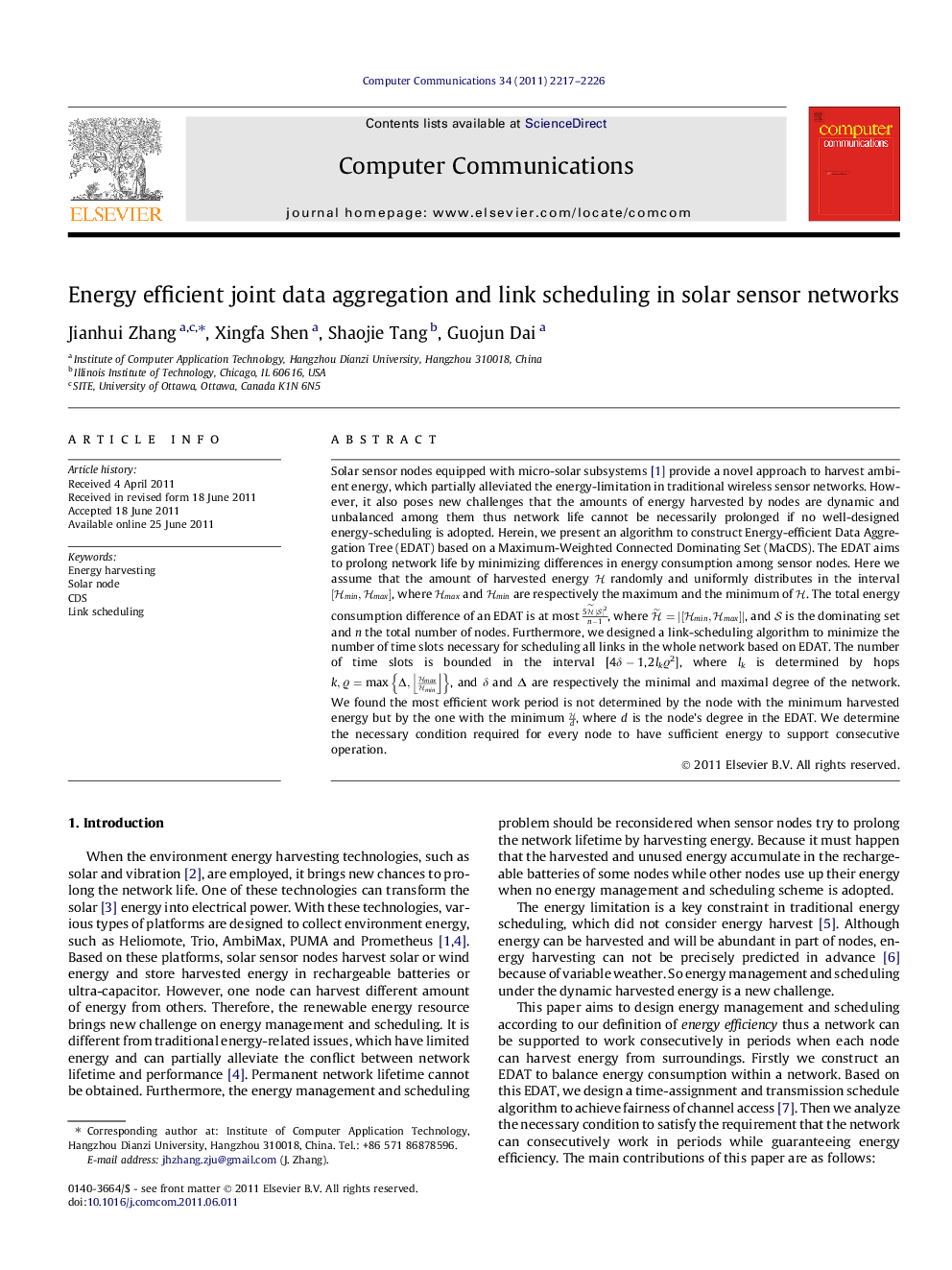| کد مقاله | کد نشریه | سال انتشار | مقاله انگلیسی | نسخه تمام متن |
|---|---|---|---|---|
| 448785 | 693601 | 2011 | 10 صفحه PDF | دانلود رایگان |

Solar sensor nodes equipped with micro-solar subsystems [1] provide a novel approach to harvest ambient energy, which partially alleviated the energy-limitation in traditional wireless sensor networks. However, it also poses new challenges that the amounts of energy harvested by nodes are dynamic and unbalanced among them thus network life cannot be necessarily prolonged if no well-designed energy-scheduling is adopted. Herein, we present an algorithm to construct Energy-efficient Data Aggregation Tree (EDAT) based on a Maximum-Weighted Connected Dominating Set (MaCDS). The EDAT aims to prolong network life by minimizing differences in energy consumption among sensor nodes. Here we assume that the amount of harvested energy HH randomly and uniformly distributes in the interval [Hmin,Hmax][Hmin,Hmax], where HmaxHmax and HminHmin are respectively the maximum and the minimum of HH. The total energy consumption difference of an EDAT is at most 5H∼|S|2n-1, where H∼=|[Hmin,Hmax]|, and SS is the dominating set and n the total number of nodes. Furthermore, we designed a link-scheduling algorithm to minimize the number of time slots necessary for scheduling all links in the whole network based on EDAT. The number of time slots is bounded in the interval [4δ − 1, 2lkϱ2], where lk is determined by hops k,ϱ=maxΔ,HmaxHmin, and δ and Δ are respectively the minimal and maximal degree of the network. We found the most efficient work period is not determined by the node with the minimum harvested energy but by the one with the minimum Hd, where d is the node’s degree in the EDAT. We determine the necessary condition required for every node to have sufficient energy to support consecutive operation.
Journal: Computer Communications - Volume 34, Issue 18, 1 December 2011, Pages 2217–2226